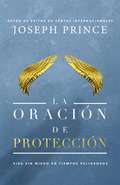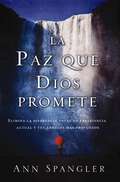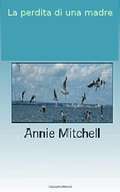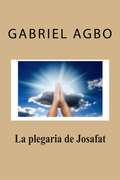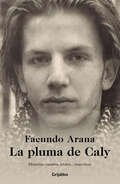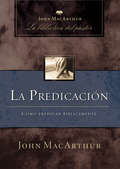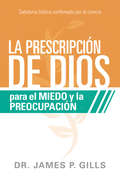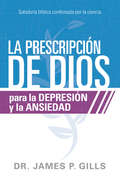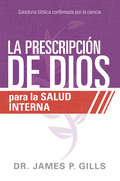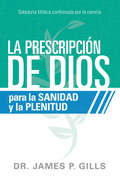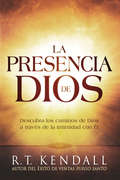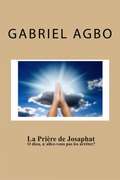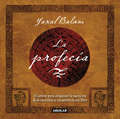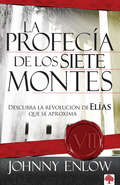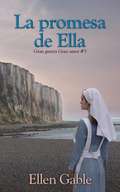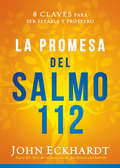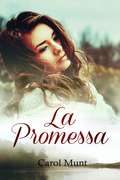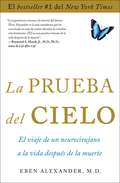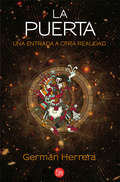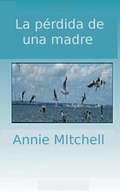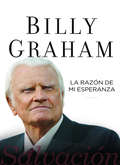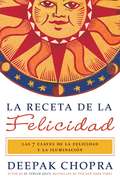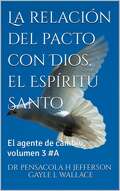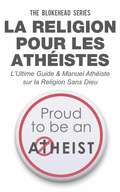- Table View
- List View
La oración de María
by Keith FournierEn este volumen, conciso y fácil de leer, Keith Fournier, nos presenta a la joven virgen de Nazaret trayendo una luz fresca que sirve de antídoto para las enfermedades espirituales de la época. La oración de María refleja la humildad, la sencillez, y el amor sin egoísmos que resultan de la invitación amorosa de Dios, que acude a las personas en su vida diaria y los invita a tener una relación con Él.
La oración de protección: Vivir sin miedo en tiempos peligrosos
by Joseph PrinceIn these days of danger, trouble, and evil, New York Times bestselling author Joseph Prince reveals how God's children can have round-the-clock protection through the power of prayer. THE PRAYER OF PROTECTION unveils the Bible's ultimate psalm of protection, Psalm 91, to help you understand more about how God guards His children. Joseph Prince offers simple keys and practical advice to finding and resting in the secret place of the Most High, where no evil can even come near you. You'll begin to live unafraid and with boldness as you allow the certainty of your heavenly Father's love and the sure promises of His Word to guard your heart against every fear. Come under the wings of the Almighty and live life divinely protected, positioned, and free from all fears with our covenant-keeping God!
La paz que Dios promete: Elimina la diferencia entre tu experiencia actual y tus anhelos más profundos
by Ann SpanglerSi Dios prometió darnos la «paz que sobrepasa todo entendimiento», ¿por qué nos sentimos tan ansiosos a veces? ¿A que le tenemos tanto miedo? ¿Hay maneras de vivir que nos lleven a la paz, o se trata de maneras de pensar y actuar que llevan a la ansiedad y los conflictos? Jesús es la personificación de la paz. ¿De dónde le venía? «La paz que Dios promete» une a nuestro anhelo de paz, la promesa divina de dárnosla. La escritora Ann Spangler investiga estas y otras preguntas. ¿Qué podemos aprender de las Escrituras, de la tradición judía, de los Amish y de otros grupos acerca del reposo, la sencillez, la sanidad y la paz? Sus relatos y respuestas le sorprenderán, y si las lleva a la práctica, lo pueden transformar y capacitar para que sienta la paz que Dios quiere que tenga.
La perdita di una madre
by Annie Mitchell Giulia MastrantoniQuesta coppia di libri è stata scritta pensando alle madri che cercano supporto dopo la perdita di un figlio di qualunque età, anche di aborto spontaneo. Vuole essere un dono e un appoggio. Un omaggio. Un segno d’amore. A volte dobbiamo far fronte a situazioni che ci saturano di dolore e di paura. Ma possiamo trovare le parole giuste per condividere questi sentimenti e andare oltre. Leggere queste poesie. Sono il cuore di una madre che ha sofferto.
La plegaria de Josafat
by Lilian G. Selvaggio Gabriel Agbo¡Es posible ganar toda batalla en esta vida! Todas las batallas que enfrentamos ya sea como individuos o como grupos, son representadas en tres categorías-guerras, enfermedades y hambre. Las guerras representan oposiciones ya sea físicas o espirituaes, batallas y conflictos que enfrentamos a diario. Las enfermedades ingluyen todos los malestares, infecciones, enfermedades curables e incurables. Luego, el hambre o la sequía comprenden todas las carencias económicas, financieras y otros desafíos. Y en este libro, efectivamente demostramos que siempre es posible pasar por estos desafíos y salir victoriosos Aquí encontrarás principios establecidos y probados que permanentemente te podrán del lado de la victoria. Son realmente probados, divinos, universales y eternos. ¡No pueden fallar! Aquí encontrarás diez capítulos bien cargados y poderosos: La Plegaria de Josafat, Dios del Cielo y de la Tierra, Esta es nuestra Herencia, La guerra, las enfermedades y el hambre, Ve cómo nos recompensan, ¿No los detendrás? No temas ni te desanimes: No es tu batalla, Sal y toma tus posiciones y El Poder de la Alabanza. También hemos establecido una cantidad de puntos para la oración al final de cada capítulo que te traerán resultados inmediatos. ¡Que Dios te bendiga abundantemente!
La pluma de Caly: Historias, cuentos, relatos… esas cosas
by Facundo AranaEl primer libro de cuentos del reconocido actor y músico Facundo Arana; un conjunto de historias de ficción sobre la enfermedad, la resiliencia, la muerte, la fe, el amor; experiencias fantásticas y otras que atraviesan la historia. Nací el 31 de marzo de 1972. Tuve una familia increíble, la infancia más linda del mundo, una adolescencia perdida. Quise morir. Tuve cáncer; me salvó mi madre, y me salvaron el abrazo de los míos y los ángeles disfrazados de médicos, la pluma de Caly y su compañía. Me salvaron el dibujo, el teatro y jugar con la música. Amo actuar, tocar el saxo, el piano, la armónica, cantar, dibujar, escribir, bucear, subir montañas, pilotear aviones, saltar de ellos, surfear, perderme en paisajes increíbles, coleccionar atardeceres y amaneceres, viajar. Pude convertir mis pasiones en mi oficio. Amo a mis cachorros. Encontré al ser más extraordinario del universo y comparto mi vida con ella. Saqué dos discos y me presenté con mi banda por todos lados. Toqué el saxo en el subte. Subí tres veces al Aconcagua, y el Everest me dejó llegar a su cumbre con ayuda de mis amigos. Viajé por toda mi tierra que quiero tanto, con giras de teatro y de música, con una campaña de donación de sangre y porque sí. La recorrí en avión, auto, moto, camioneta, micro, bicicleta, caminando, a dedo. Vivo mi vida con toda mi alma. Lloré todas mis lágrimas. Reí todas mis risas. Miro de frente. Y escribí estas historias.
La predicación
by John MacarthurSi está tratando de condensar lapredicación bíblica en un volumen, ¡aquí lo tiene!John MacArthur y otros distinguidos maestros de predicadores responden almandato apostólico en este tratado completo de la predicación expositiva. Lareconocida pasión que tiene el doctor MacArthur por las Escrituras se combinócon la visión y destreza de otros miembros de la facultad de The Master'sSeminary para producir una declaración definitiva de cómo dar a conocer elsignificado de la Palabra de Dios con eficacia a la congregación de hoy en día.Otros colaboradores incluyen a: James F. Stitzinger, JamesE. Rosscup, Robert L. Thomas, George J. Zemek, Donald G. McDougall, Richard L.Mayhue, Irvin A. Busenitz y David C. Deuel.
La prescripción de Dios para el miedo y la preocupación: Sabiduría Bíblica confirmada por la ciencia
by James P. Gills¿A dónde acude para disfrutar de la paz que sobrepasa todo entendimiento? Jesús nos da un mandato claro con respecto a preocuparnos: no lo hagan. Aun así, la preocupación y el miedo pueden parecer inevitables e imposibles de vencer. Sin embargo, no lo son. Existe una cura: ser agradecidos. Es posible hallar la paz cuando deja ir el miedo y la preocupación, le da gracias a Dios por su relación con usted y confía en Él para que controle todo en su vida, tanto ahora como en el futuro. Manténgase afianzado a la realidad de la soberanía de Dios, y sepa que Él promete nunca dejarlo o abandonarlo. A lo largo de estas páginas, examine sus miedos y preocupaciones y descubra cómo un corazón lleno de gratitud es en realidad la prescripción de Dios para el miedo y la preocupación. Al igual que el Dr. James Gills aplique la verdad bíblica a una de sus mayores necesidades mientras se aventura por un camino hacia esperanza y la sanidad. Jesus gives you a clear command about worry: don&’t do it! Yet worry and fear can seem inevitable and impossible to overcome. Peace can be found when you let go of fear and worry, thank God for is relationship with you, and trust Him to handle everything in your life. Hold tight to the reality of God's sovereignty, and know that He promises to never leave or forsake you. In these pages examine your fears and worries, and discover how a thankful heart is indeed God's Rx for fear and worry. Join James Gills, MD, in applying biblical truth to one of your greatest needs while venturing on a path to hope and healing.
La prescripción de Dios para la depresión y la ansiedad / God's Rx for Depression and Anxiety: Sabiduría Bíblica confirmada por la ciencia
by James P. Gills¿A dónde acude usted para disfrutar de una alegría continua? Aquel que establece el universo en su lugar puede establecer paz y alegría en su vida. Venza la depresión y la ansiedad al entregarle cada pensamiento ansioso a Dios. Crea y reciba sus promesas para su vida, y ajuste su visión espiritual a fin de ver todos los días por medio de un lente eterno en lugar de a através de sus problemas. Experimente la paz, el poder y la presencia de DIos, sin importar lo difíciles o deprimentes que puedan ser sus circunstancias, y comprenda cómo el gozo es en efecto La prescripción de Dios para la depresión y la ansiedad. Al igual que el Dr. James Gills, aplique la verdad bíblica a una de sus mayores necesidades mientras se aventura por un camino hacia la esperanza y la sanidad. Where do you go for continuous joy? He who set the universe in place can set your life in peace and joy. Overcome depression and anxiety by surrendering every anxious thought to God, believing and receiving His promises for your life and adjusting your spiritual eyesight to see every day through an eternal lens rather than through your troubles. Experience His peace, power, and presence, no matter how difficult or depressing your circumstances might be, and realize how joy is indeed God's Rx for depression and anxiety. Join James Gills, MD, in applying biblical truth to one of your greatest needs while venturing on a path to hope and healing.
La prescripción de Dios para la salud interna: Sabiduría Bíblica confirmada por la ciencia
by James P Gills¿A dónde acude en busca de sanidad para la mente y el espíritu? La senda hacia la salud interna comienza con ser transformada por Cristo y estar alineado con Él. Pero esta senda tiene muchos obstáculos, como orgullo, envidia y celos. Para recibir todo lo que Dios es, desarraigue esos obstáculos y busque alineamiento con Él.La prescripción de Dios para la salud interna significa ser transformado mediante la renovación de su mente por medio del perdón, la oración y la comunión con otros. Al igual que el Dr. James Gills aplique la verdad bíblica a una de sus mayores necesidades mientras se aventura por un camino hacia la esperanza y la sanidad.Where do you go for healing of the mind and spirit? The path to inner healing starts with being transformed by and aligned with Christ. But this path has many roadblocks, such as pride, envy, and jealousy. In order to receive all that God is, uproot these roadblocks, and seek spiritual alignment with Him. God's Rx for inner healing means being transformed by the renewing of your mind through forgiveness, prayer, and fellowship with others. Join James Gills, MD, in applying biblical truth to one of your greatest needs while venturing on a path to hope and healing.
La prescripción de Dios para la sanidad y la plenitud: Sabiduría bíblica confirmada por la ciencia
by James P. Gills¿A dónde acude para ser restaurado? Los blogs, las publicaciones en redes sociales, los libros, los dispositivos electrónicos, las modas y los infomerciales, todos tienen el objetivo de mejorar su dieta, su condición física y su bienestar. Pero primero, ponga su vista en Dios como su fuente máxima de guía y dirección. Porque la verdad de la Palabra de Dios le brinda toda la sabiduría que necesita para tomar decisiones saludables que restauren la plenitud de su cuerpo, mente y espíritu.La prescripción de Dios apra la sanidad y la plenitud le enseña a respetar la creación de Dios-su cuerpo- por medio de protegerlo como su administrador, al tomar decisiones sabias en cada aspecto de su vida y permanecer profundamente agradecido por ello. Acompañe al Dr. James Gills para aplicar la verdad bíblica a una de sus mayores necesidades mientras se aventura en un sendero de esperanza y sanidad. Blogs, social media postings, books, gadgets, fads, infomercials--they all aim to improve your diet, fitness and well-being. But first, set your sights on God as your ultimate source of guidance. The truth is God's Word gives you all the wisdom you need to make healthy choices that restore wholeness in your body, mind, and spirit. God's Rx for Health and Wholeness teaches you to respect God's creation--your body--by protecting it as its steward, making wise decisions in every area of your life, and remaining profoundly thankful for it. Join James Gills, MD, in applying biblical truth to one of your greatest needs while venturing on a path to hope and healing.
La presencia de Dios / The Presence of God: Descubra los caminos de Dios a través de la intimidad con Él
by R. T. KendallHONRA, GLORIFICA Y AMA A DIOS APRENDIENDO A VIVIR EN SU PRESENCIA. R. T. Kendall lo invita a descubrir lo que significa estar en la presencia de Dios. En esta mirada nueva y fresca a la presencia de Dios, el autor explora todo, desde la omnipresencia del Señor hasta la manifestación tangible de su presencia. Descubrirá por qué Dios a veces puede impedirle disfrutar de un sentido de su presencia, mientras que en otras ocasiones usted es capaz de experimentar un agudo sentido de temor o reverencia a DIos que lo conduce a permanecer de rodillas en oración, lo lleva a adorarlo de manera espontánea, o da lugar a sanidades y otros milagros. Kendall le enseña cómo desarrollar una sensibilidad a su presencia para que su amor por Dios y su relación con Él se profundicen y crezcan. R. T. Kendall invites readers to discover what it means to be in the presence of God. In this fresh, new look at God&’s presence, Kendall explores everything from the omnipresence of God to the tangible manifestation of His presence.Readers will discover why God might at times withhold a sense of His presence. And at other times they might experience an acute sense of awe or reverence of God that drives them to their knees in prayer, leads them into spontaneous worship of Him, or brings about healing and other miracles.
La prière de Josaphat: Ne les jugeras-tu pas?
by Gabriel AgboJosaphat...devant ses ennemis. Ses anciens amis qui sont devenus des traîtres. Et ils se sont alliés, ils sont nombreux. Dieu les laissera-t-il faire? A-t-Il oublié l'alliance? Mais quand son peuple avait bâti un sanctuaire pour Dieu, il avait engagé Dieu dans une alliance? Dieu ne respectera-t-Il pas cette alliance?
La profecía
by YAXAL BALAMEl secreto para conquistar la nueva era de la esperanza se encuentra en este libro. Descubre el enigma del pueblo maya, su última profecía, y afronta el año 2012 con esperanza y nueva luz. Aquí presentaremos la revelación, el testimonio y la narración de todo lo que estaba oculto». «Se avecina una transformación del mundo. El camino que hemos de seguir es fácil: tomar conciencia de lo que nos rodea y de lo que en realidad existe en nuestro interior».
La profecía de los siete montes: Descubra la revolución deElías que se aproxima
by Johnny Enlow¡USTED HA SIDO LLAMADO A IMPACTAR SU CULTURA! La revolución de Elías afectará el mundo y preparará el camino del Señor antes de su regreso. Según las Escrituras, Jesús se sentará a la derecha del Padre hasta que todos sus enemigos sean puestos bajo sus pies. El pastor y autor Johnny Enlow enseña que las siete naciones enemigas del pueblo de Israel en el Antiguo Testamento, están vigentes hoy. Estas naciones corresponden a los siete “montes” de la sociedad global: los medios de comunicación, el gobierno, la educación, la economía, la religión, la celebración (las artes y el entretenimiento) y la familia. Con poder y favor divino, estos montes serán confrontados. ¡Solamente los revolucionarios tomarán estos montes para Cristo! Usted puede ser uno de ellos. ¡Adiéstrese y prepárese para reclamarlos!T3
La promesa de Ella: Gran Guerra- Gran Amor Libro 3 (Gran guerra Gran amor #3)
by Ellen GableCuando se une al esfuerzo de guerra durante la Gran Guerra, la enfermera estadounidense Ella Neumann no ve aliados o enemigos. Hija de inmigrantes alemanes,para ella todos los soldados, aliados o del Eje, son seres humanos que necesitan cuidados. Una promesa para sí misma y una promesa que le hizo un oficial enemigo se convirtio en el catalizador de la vida que planea llevar después de la guerra. Pero un apuesto soldado canadiense puede complicar sus planes. En esta tercera entrega de la serie Gran Guerra - Gran Amor, únete a Ella en una historia de promesas, traición y amor incondicional.
La promesa del Salmo 112 / The Psalm 112 Promise: 8 claves para ser estable y próspero
by John EckhardtEl autor de mayor ventas John Eckhardt revela la verdad del Salmo 112, la cual es que el hombre que teme al señor sea amable, lleno de compasión y generoso. Su corazón está fijo y establecido. No puede ser movido. Él es intransigente y consistentemente justo. Su justicia perdura para siempre. Este salmo muestra el cuadro de la vida del creyente que es equilibrado, estable, firme e inamovible; y la enseñanza de Eckhardt revela cómo todos podemos llegar ahí.
La promessa
by Antonia Mariani Carol MuntL'amore può sopravviere alla morte? Questa è la domanda a cui Angela dovrà far fronte dopo la morte tragica e inaspettata di Samuel. Una promessa fatta da lui attraverso un sogno porterà Angela a percepire il mondo in modo diverso; lasciandosi alle spalle il buio, le sue paure e i suoi dubbi e trasformando la sua vita più di quanto avrebbe mai immaginato. Un romanzo che parla dell'amore assoluto, quell'amore che è privo di giudizi e di condizioni. Un amore capace di trasformare la nostra anima con lo scopo di raggiungere finalmente la felicità. La Promessa è un romanzo pieno di speranza che vi permetterà di capire il vero significato dell'amore.
La prueba del cielo: el viaje de un neurocirujano a la vida después de la muerte
by Eben AlexanderMiles de personas han tenido experiencias cercanas a la muerte, pero los científicos han sostenido de que son imposibles. El doctor Eben Alexander era uno de esos científicos. Un neurocirujano altamente entrenado, Alexander sabía que las experiencias cercanas a la muerte se sienten reales, pero que simplemente son fantasías producidas por el cerebro bajo un estrés extremo. Luego, el cerebro del propio doctor Alexander fue atacado por una extraña enfermedad. La parte del cerebro que controla los pensamientos y las emociones —y en esencia nos hace humanos— se le apagó por completo. Estuvo en coma durante siete días. Entonces, mientras sus médicos consideraban parar su tratamiento, los ojos de Alexander se abrieron. Volvió. La recuperación de Alexander es un milagro médico. Pero el verdadero milagro de su historia yace en otro lugar. Mientras su cuerpo estaba en coma, Alexander viajó más allá de este mundo y se encontró con un ser angelical que lo guió a los terrenos más profundos de la existencia suprafísica. Allá conoció a, y habló con, la fuente Divina del universo. La historia de Alexander no es una fantasía. Antes de comenzar su viaje, no podía reconciliar su conocimiento de la neurociencia con ninguna creencia del cielo, Dios ni el alma. Hoy en día, Alexander es un médico que cree que la verdadera salud se puede adquirir solo cuando nos damos cuenta de que Dios y el alma son reales y la muerte no es el final de la existencia personal, sino solo una transición. Esta historia sería extraordinaria sin importar a quién le haya ocurrido. Que le haya ocurrido al doctor Alexander la hace revolucionaria. Ningún científico ni persona de fe la podrá ignorar. Leerla te cambiará la vida.
La puerta
by Germán HerreraEste libro es la narración de un suceso extraordinario. En esa búsqueda espiritual que yace en todos, aunque solamente algunos la reconocen, un hombre llega a una comunidad en la que las experiencias y las enseñanzas de antiguas tradiciones cambiarán su vida siempre y le mostrarán el camino para lograr la evolución de la conciencia.Para ello, debe atravesar "La Puerta", una entrada a un sitio sagrado, rodeado de montañas, el cual sólo pueden conocer quiénes han emprendido una búsqueda interiorY por el que se llega a una nueva vida, regida por secretos ancestrales. Así, en medio de gente que ha renunciado al mundo ordinario y vive bajo las enseñanzas milenarias de culturas prehispánicas y la sabiduría de los maestros y guías de Oriente, descubre que la realidad es algo totalmente distinto a lo que solemos pensar y percibir.Al emprender este camino, quienes lo llevaron a ese lugar trascendente le piden que escriba el testimonio de sus vivencias el cual se comparte ahoracon todos aquellos interesados en su crecimiento y desarrollo espiritual. Este libro es la narración de un suceso extraordinario. En esa búsqueda espiritual que yace en todos, aunque solamente algunos la reconocen, un hombre llega a una comunidad en la que las experiencias y las enseñanzas de antiguas tradiciones cambiarán su vida siempre y le mostrarán el camino para lograr la evolución de la conciencia.Para ello, debe atravesar "La Puerta", una entrada a un sitio sagrado, rodeado de montañas, el cual sólo pueden conocer quiénes han emprendido una búsqueda interiorY por el que se llega a una nueva vida, regida por secretos ancestrales. Así, en medio de gente que ha renunciado al mundo ordinario y vive bajo las enseñanzas milenarias de culturas prehispánicas y la sabiduría de los maestros y guías de Oriente, descubre que la realidad es algo totalmente distinto a lo que solemos pensar y percibir.Al emprender este camino, quienes lo llevaron a ese lugar trascendente le piden que escriba el testimonio de sus vivencias el cual se comparte ahora con todos aquellos interesados en su crecimiento y desarrollo espiritual.
La pérdida de una madre
by María Mendoza Annie MitchellEsta pequeña colección de poesía ha sido escrita con madres en mente y otros que buscan consuelo y apoyo después de la pérdida de un niño a cualquier edad incluyendo mortinatos y aborto involuntario. Es un producto útil y regalo para cualquier padre para expresar su amor por su niño. A veces, cuando nos enfrentamos a una pérdida, como un niño nos encontramos que estamos abrumados por el dolor que puede cerrar nuestra capacidad de encontrar las palabras adecuadas para expresar nuestro amor por nuestro hijo, ya que esto es lo que me sucedió. Es posible que desee recitar una sección de poesía seleccionada por usted y los miembros de su familia de esta colección sensible de Poesía escrita directamente desde el corazón de una madre que sufrió la pérdida de su propio hijo.
La razón de mi esperanza
by Billy GrahamEl Evangelizador de América presenta su obra maestra.¿Quién se rehusaría a ser salvado? Esta es la pregunta que Billy Graham hace a lo largo de este libro. La respuesta es muchas veces sorprendente porque, en efecto, hay personas que se rehúsan a ser salvadas aunque se encuentren en una situación de desesperanza. ¿Por qué? Cada capítulo de este libro atrae al lector planteándole preguntas para su reflexión y usando ilustraciones relevantes que le permitirán observar las diferencias entre lo que piensa el mundo y lo que la Biblia dice.El propósito de Billy Graham es lograr que el lector se interese por contemplar su vida a la luz del aquí, el ahora y el más allá. ¿Quién se rehusaría a ser rescatado de un accidente aéreo, de un naufragio, del incendio de un automóvil o de la bala de un asesino? Se incluyen relatos verdaderos que harán al lector preguntarse qué piensa y cómo respondería a experiencias similares, llevándolo al final a la pregunta más importante de la vida.En lo que podría ser su último libro, Billy Graham presenta el mensaje central que ha guiado su vida y su vocación por más de 70 años. Colmado de nuevas historias y una verdad siempre vigente, Graham invita al mundo a volver a su prioridad espiritual como solo él puede hacerlo. America's Evangelist presents his masterwork.Who would refuse rescue? This is the question Billy Graham asks throughout this book. The answer is sometimes surprising because there are actually people who refuse to be saved, even if they are in a hopeless situation. Why? Each chapter draws the reader in by posing questions for contemplation using relevant illustrations about what the world thinks in contrast to what the Bible says. As Mr. Graham has expressed for decades, his purpose is to engage the reader in considering his or her life in light of the here and now and the hereafter. Who would refuse rescue from a plane crash, a sinking boat, an automobile fire, or an assassin's bullet? True accounts are given that cause readers to ask what they think and how they would respond to similar experiences and to ultimately bring them to life's most important question.In what could be his final book, Billy Graham presents the core message that has guided his life and calling for more than 70 years. Filled with new stories and timeless truth, Graham once again calls the world back to its spiritual priority as only he can. The book coincides with a massive campaign of the same name by the Billy Graham Evangelistic Association that will mobilize millions of people in the United States to invite friends and neighbors into their homes to hear the message of Jesus Christ through customized video and a new message from Mr. Graham.
La receta de felicidad
by Deepak ChopraTodo lo que tememos y deseamos cambiar puede transformarse mediante la felicidad, nuestro más simple anhelo y también el más profundo. Deepak Chopra La felicidad es algo que todos deseamos, pero cómo encontrarla sigue siendo un misterio. En La receta de la felicidad, Deepak Chopra nos muestra siete claves para descubrir los verdaderos secretos de la alegría, llevándonos en un inspirador viaje hacia nuestro yo verdadero, el único lugar indiferente a los problemas y las desgracias. La finalidad de la vida es la expansión de la felicidad, nos dice Chopra. Pero en el exigente mundo de hoy, lograr esta meta puede parecer difícil, si no completamente fuera de nuestro alcance. La sociedad refuerza la creencia de que la satisfacción es el resultado del éxito, la riqueza y las buenas relaciones. Sin embargo, Chopra nos enseña que lo contrario es cierto: todo el éxito en la vida es el producto de la felicidad, no la causa. Entonces, ¿cuál es la causa? La receta de la felicidad comparte los principios espirituales de una vida basada en el yo verdadero que existe en cada uno de nosotros, un sentido que se encuentra más allá del ir y venir de la vida diaria, y unos simples ejercicios a través de los que podremos eliminar las causas de la infelicidad y alcanzar un nivel de alegría más profundo. Y después de que todas las vías hacia la felicidad se hayan explorado, sólo quedará una ruta: el viaje hacia la iluminación. En La receta de la felicidad, el intimidante reto de encontrar la felicidad se convierte accesible paso a paso.
La relación del pacto con Dios, el Espíritu Santo # 3: El agente de cambio, volumen 3
by DR Pensacola H JeffersonLA RELACIÓN DEL PACTO CON DIOS, EL ESPÍRITU SANTO, Volumen 1, trata sobre cómo la “unidad del pacto” está unida por el vínculo del amor SANTO y conectada a través del Espíritu Santo. “…“ Dios con nosotros… ”(Mateo 1:23 LBLA). "... Dios es amor ..." (1 Juan 4: 4-8 KJV). "... Amor ... el VINCULO perfecto de UNIDAD ..." (Colosenses 3:14 LBLA). “… El que se une al Señor, es UN ESPÍRITU… [con Dios, el Padre por medio de Jesucristo, nuestro Señor]…” (1 Corintios 6:17 RV). LA RELACIÓN DEL PACTO CON DIOS, EL ESPÍRITU SANTO, Volumen 2, trata sobre la transformación del alma perdida y espiritualmente muerta en un "alma viviente". “... De modo que si alguno (mujer) está en Cristo, nueva criatura es: las cosas viejas pasaron; he aquí todas son hechas nuevas ... ”(2 Corintios 5:17 RV). "... y el hombre (mujer) se convirtió en un alma viviente (de nuevo) ..." (Génesis 2: 7 KJV). LA RELACIÓN DEL PACTO CON DIOS, EL ESPÍRITU SANTO, Volumen 3, partes A y B, trata sobre la “unidad del pacto” siendo la fuente para suplir TODAS las necesidades del pueblo de Dios: “… Dios suplirá todas [sus necesidades]…” (Filipenses 4:19 LBLA). “… Dios te proveerá generosamente todo lo que necesites…” (2 Corintios 9: 8 NTV). "... [de Dios] ... el Espíritu Santo ... es la FUENTE [de TODO] ..." (1 Corintios 12: 4-11 NTV). Dios, como la FUENTE de TODO, se refiere al Espíritu Santo como el ORIGEN del cual se obtienen principalmente las NECESIDADES de su pueblo. "... Yo soy el Alfa y la Omega ..." (Apocalipsis 1: 8 NASB). “... Yo ... [SOY] ... el primero, y con el postrer ... '" (Isaías 41: 4 NASB). DIOS, el Espíritu Santo), y aparte de [su PALABRA] nada [VIENE] a existir que [haya o VOLVERÁ] a existir ... (Juan 1: 1-4 LBLA). Dios es el ORIGEN. "..." YO SOY QUIÉN SOY ... ”(Éxodo 3: 14-15 NASB).
La religion pour les athéistes
by The BlokeheadL’athéisme est caractérisé par le rejet ou un manque de croyance en un Etre Suprême, plus communément appelé Dieu. Les gens qui pratiquent ces croyances sont appelés athéistes. Cette croyance comporte néanmoins quelques nuances. Une forme d’athéisme n’est qu’une simple expression du scepticisme, un refus de l’existence concrète de Dieu. Elle implique le refus ou l’incapacité à accepter le concept qu’un dieu existe actuellement, et que Dieu existe du simple fait que de nombreuses personnes croient en lui. On appelle cette forme de pensée “l’athéisme faible“. Au contraire, “l’athéisme fort“ implique un refus total de l’existence de Dieu. Ainsi, quand quelqu’un se proclame athéiste, il peut être de type fort ou faible, selon le degré d’intensité du déni de Dieu qu’il ressent.

